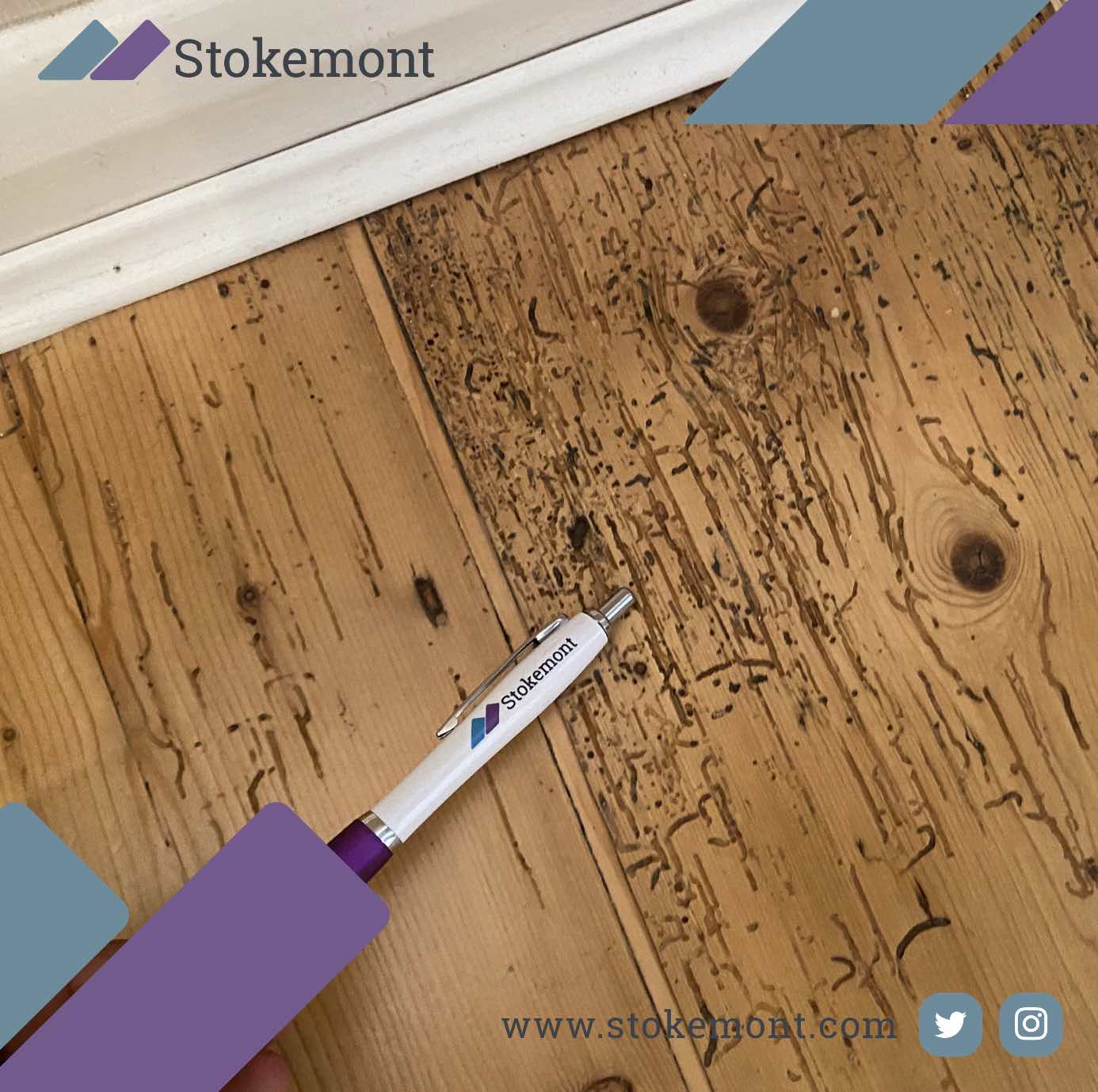Thank you for clicking on today’s property surveying blog post. Today we are going to delving into building surveying and will be looking at wood worm, the cause of it, and how to quickly spot it before it eats away your property structure!
So, what is Wood Worm?
Woodworm is the expression used to describe the actions of wood boring insects, eating into wooden elements of a property structure. Wood boring insects tend to lay eggs which then naturally duplicate, this can cause serious infestations and serious structural damage if not addressed promptly.
What’s the cause of Wood Worm?
The cause of woodworm is usually due to high-moisture content in timber. So, issues such as rising or penetrating damp, poorly ventilated areas and leaks where timbers are present would then open all doors for wood boring insects to set up shop.
Identifying woodworm quickly is imperative, as its very likely, if left for a long duration of time, severe damage will be caused your property.
In many cases, homeowners and potentially even you may not realise that you have a woodworm problem until the resulting damage becomes apparent.
Woodworm can be aggressive in its motive and can deteriorate timber; this may lead to structural failure within your property.
What are signs of Woodworm?
Fresh Exit Holes
A number or tiny holes or ‘dots’ would be a quick indication of woodworm; these holes are just a few millimetres in diameter and are easily visible. Please note, just because there are holes present, doesn’t mean you have a current (or live) infestation. It may be likely that the woodworm issue is historic. If in doubt, we would recommend contacting a specialist to identify this for you.
Tunnels In Wood
Tunnels in timber are the result of boring woodworm larvae, this could indicate either live or historic woodworm presence.
Bore Dust (Also known as Frass)
Woodworm beetles leave behind frass when emerging from eating through timber. The frass or woodworm dust is light in colour and mirrors very fine wood shavings. This is a good indication that woodworm is live and present.
Weak & Damaged Floorboards or Skirting Boards
This is a less visually obvious signs of wood worm which is concealed but are also evident at the same time, this is a sign of deteriorated and weakened timber which has been gradually eaten away.
Live Adult Beetles
Woodworm beetles will often be looking to mate.
Dead Beetles
On occasion adult woodworm beetles cannot escape the property and die. Frequently found deceased insects are a good indication of woodworm presence.
Eggs
These are often difficult to spot, woodworm eggs can barely be seen with the naked eye, being approximately 0.5mm x 0.3mm in size. They are lemon shaped, rough and gritty to the touch and are often laid on the timber immediately adjacent to, or in the adult beetle’s emergence hole.
Woodworm Larvae
Can be called wood grub and are usually a creamy-white colour.
If you are unsure which of these woodworm issues addressed above are causing the damage, then it is important to contact a timber specialist to inspect the timber to avoid unnecessary treatments that may not be appropriate.
Equally, If you are planning on purchasing a new property and the current seller is unsure whether there is any presence of woodworm or historic signs of woodworm, we would strongly recommend appointing a Surveyor to carry out an Pre Purchase RICS HomeBuyer Report on your behalf which would flag up and report on any issues to do with the property thus providing you sound of mind when finalising the exchange.
If you are currently thinking about purchasing a property and you would like one of our experienced surveyors to carry out a RICS HomeBuyer Report then please do not hesitate to get in touch by clicking here, as our team would be more than happy to assist with your potential purchase.




